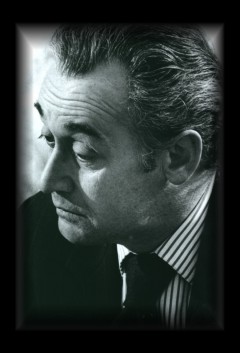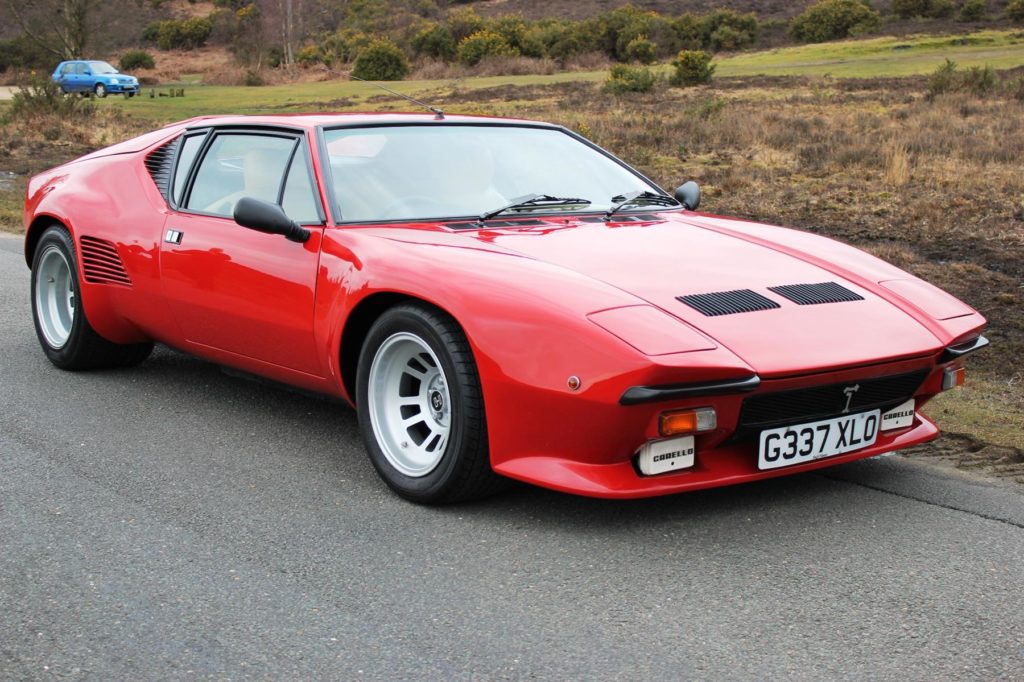| DeTomaso Main | Vallelunga | Pantera | DeTomaso Gallery |
| Alejandro de Tomaso Story | Mangusta | Shelby de Tomaso P70 |

Alejandro de Tomaso was born in Argentina in 1928. His father’s family was from Italy, his mother’s family were wealthy Argentineans. His father rose to political power as the Prime Minister of Argentina only to die of a heart attack at the young age of 38. Alejandro left school at the age of 15 to learn about running the family cattle business. By the age of 20 he was in charge of the ranches. During this time he also was involved with two other avocations, a racing career and an underground newspaper that opposed then Argentina president, Juan Peron. He became involved with a group seeking to overthrow Peron that was unsuccessful. Fleeing from Argentina to his father’s homeland of Italy, he settled in Modena, getting a job as a mechanic for Maserati.
It didn’t take him long, with his racing experience to start driving for the Maserati team. In 1955 he co-drove a Maserati to win its class in Buenos Aires. One fateful day, at the Modena Maserati factory, a lady race car driver, named Elizabeth Haskins, stopped in to discuss purchase of a new Maserati race car.
Haskins had been pretty successful in the SCCA races driving a Siata. Alejandro and Haskins met and became a couple on and off the race course. In 1957, they placed 6th in the race, winning their class, in a 1,000 kilometer race in Buenos Aires driving an OSCA. They married and continued racing. In 1958, they finished first in their class at the 12 hours of Sebring driving another OSCA. The next year he co-drove with Colin Davis at Lemans winning the Index of Performance, placing 11th overall.
It was time for him to turn his energies to building cars instead of racing them, although he did drive in some races in 1960. He established de Tomaso Automobili in Modena, Italy in 1959. His brother in law, Amory Haskins, supplied most of his funding until Ford came along.
de Tomaso started building limited production race cars. The first car was a Formula Two car with an OSCA engine and a Colotti transmission. The next car was a Formula Junior car running a Fiat engine. New cars and ideas came one after another. de Tomaso may not have had an engineering background, but he had plenty of great ideas which he gave to his engineers to complete. Too many projects kept him from finding the success he wanted. He was able to get a Formula One car into the Grand Prix but like many of his projects, it too died prematurely. One thing de Tomaso should be recognized for is his support of mid-engine cars. Having the engine behind the driver and ahead of the rear axle helped balance the handling of the car and reduced the heat. Mid-engine cars did not suffer from over steer and under steer like front and rear engine cars did. He also worked with light metals.
de Tomaso used money from his wife’s successful American brother and brother-in-law, Amory Haskins. He would later acquire Ghia, Vignale, motorcycle manufacturers Benelli and Moto Guzzi then Maserati. as well as a hotel in Modena and a small boat manufacturer. When he needed cash later on, he sold Ghia, Vignale and de Tomaso of America to Ford. He also got some money from the government of Italy.
So how many cars did de Tomaso Automobili produce? There are no accurate records. Estimates are that as many as 7,000 Panteras were built, or as few as 6,000. After the divorce of Ford and de Tomaso, there were about 200 unfinished bodies left over. Those bodies lasted de Tomaso a couple of years. Production continues even today. Up until 1982, it is estimated the factory turned out between 750-500 Panteras. You can purchase a new Pantera. De Tomaso offers three models; the L, the GT4 and a GT5. The GT5 is styled after the Group 5 racing cars, even thought it is not one itself. It has wide fender flairs, body skirts, a rather large front air dam and a rear spoiler. Each car is custom ordered. The newer Panteras rank near the top of sports cars available. The ones powered by the Cleveland 351 were outstanding performers.
